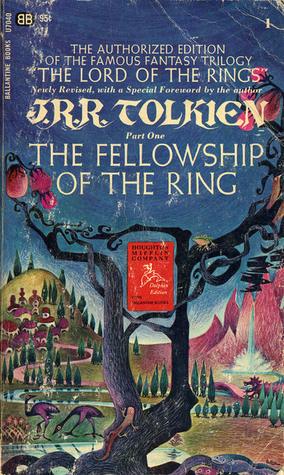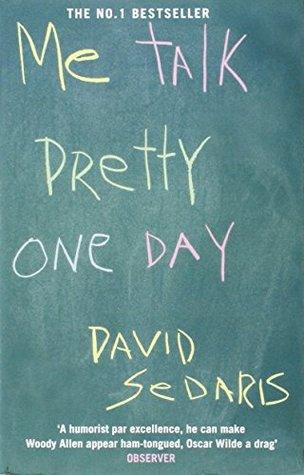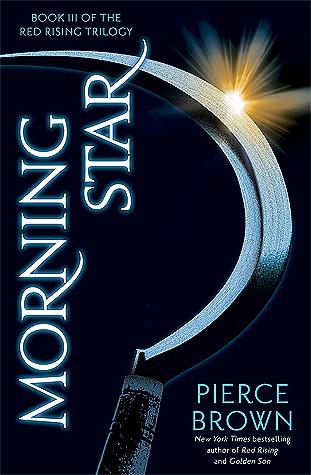Thinking, Fast and Slow by Daniel Kahneman Book Summary
Discover the key insights and takeaways from Daniel Kahneman's "Thinking, Fast and Slow" in our comprehensive book summary. Explore the dual systems of thought, understand cognitive biases, and learn how these concepts can transform your decision-making. Read our review to see why this groundbreaking book is essential for anyone seeking to enhance their thinking skills.
Thinking, Fast and Slow Book Summary
Daniel Kahneman's groundbreaking work "Thinking, Fast and Slow" revolutionizes our understanding of human decision-making by revealing two distinct systems that govern how we think. The book exposes the hidden biases and mental shortcuts that influence our daily choices, from financial decisions to personal relationships. Kahneman, a Nobel Prize-winning psychologist, masterfully explains how System 1 thinking (fast, intuitive, emotional) often conflicts with System 2 thinking (slow, deliberate, logical), leading to predictable errors in judgment. This fascinating exploration of behavioral economics provides invaluable insights into why we make irrational decisions and offers practical strategies for improving our thinking processes in both personal and professional contexts.
Enhance your reading journey by exploring The White Album Book Summary, Review & Key Insights for a deeper understanding and valuable perspectives that complement your current knowledge.
Thinking, Fast and Slow by Daniel Kahneman - Introduction
I had no idea that my brain was basically running on two completely different systems until I read Thinking, Fast and Slow. Kahneman explains how we have this fast, intuitive way of thinking that jumps to conclusions, and then a slower, more deliberate mode that actually checks those instincts. It made me rethink so many everyday decisions—like how often I trust my gut without really questioning it.
I picked up this book because I kept hearing about it from friends in business and psychology circles, and honestly, I was curious about what makes people really tick when making choices. Plus, it promised to blend psychology with economics and personal development, which sounded like a perfect mix for me.
If you’re someone who’s ever wondered why you make the choices you do, or if you want to understand how to avoid common mental traps, this book is for you. It’s not just for academics—it’s perfect for anyone interested in psychology, science, business, or even philosophy. Plus, it’s available as an audiobook, which I found super handy given its hefty 499 pages and the roughly 20-hour reading time.
So, if you want to get inside your own head and maybe even improve your decision-making, I’d say give it a shot. It’s nonfiction, sure, but it reads like a fascinating conversation about how we think—fast and slow.
What is Thinking, Fast and Slow About?

"Thinking, Fast and Slow" by Daniel Kahneman explores the dual systems of thought: the fast, intuitive system and the slow, deliberate system that governs decision-making. The book's main message highlights how these two systems influence our judgments and choices, often leading to cognitive biases and errors. Key concepts include the impact of heuristics on decision-making, the role of overconfidence in our assessments, and the significance of loss aversion in shaping our behaviors. By understanding these dynamics, readers can improve their decision-making processes and become more aware of their cognitive limitations.
About Book Author - Daniel Kahneman
Ladies and gentlemen, it’s my pleasure to introduce Daniel Kahneman, a thinker whose insights have reshaped our understanding of the human mind. Daniel didn’t start out as a psychologist; he began his journey in the realm of psychology and economics, influenced by his experiences during the war in Israel. This unique perspective led him to explore the intricacies of decision-making, culminating in his groundbreaking book, Thinking, Fast and Slow.
What’s interesting about Daniel is that he has a passion for storytelling, which shines through in his writing. Beyond his academic contributions, including Noise and Prospect Theory, he understands how narratives shape our choices. His expertise comes not just from research, but from a lifelong curiosity about the nuances of human thought.
Daniel is uniquely qualified to delve into the complexities of how we think. His ability to distill complex ideas into relatable concepts makes his work accessible and impactful. We’re in for a treat today as he shares insights that challenge the way we perceive our own decision-making processes.
More Books To Find
Thinking, Fast and Slow - Book Overview
The main idea is that our brains operate in two different ways: one is fast, intuitive, and emotional (System 1), while the other is slow, deliberate, and logical (System 2). Kahneman shows how these systems influence our decisions, often leading us to make irrational choices without even realizing it.
Why he wrote it goes beyond just explaining how we think; Kahneman wants us to recognize our cognitive biases and understand that we're not as rational as we like to believe. He aims to empower us to make better decisions by being aware of these pitfalls.
What sets it apart from other books is its scientific foundation. Kahneman, a psychologist and Nobel laureate, backs his insights with extensive research and experiments, making it feel more like a deep dive into the human psyche rather than just self-help fluff.
One story that really stuck with me is about the “Linda Problem.” When asked to judge the likelihood of Linda being a bank teller versus a bank teller who is active in the feminist movement, most people choose the latter, even though it’s statistically less likely. This illustrates how our brains can misjudge probabilities based on narratives rather than facts, showing just how easily we can be led astray by our own thinking.
Key Insights of Thinking, Fast and Slow
1. Two Systems of Thinking: Kahneman introduces the concept of System 1 (fast, intuitive, and emotional) and System 2 (slow, deliberate, and logical). Most decisions are made by System 1, which can lead to cognitive biases and errors.
2. Anchoring Effect: The book discusses how our judgments can be heavily influenced by initial information, known as anchors. Even arbitrary numbers can skew our decision-making, demonstrating the power of suggestion.
3. Loss Aversion: Kahneman highlights that losses weigh more heavily on us than equivalent gains. This principle of loss aversion explains why people tend to avoid risks, as the pain of losing is more impactful than the pleasure of gaining.
4. Overconfidence Bias: People often overestimate their knowledge and abilities, leading to overconfidence in their decisions. This bias can result in poor choices, especially in uncertain situations, as individuals fail to recognize their limitations.
5. The Illusion of Validity: Kahneman points out that we often believe in the accuracy of our judgments and predictions, even when they lack a solid basis. This illusion of validity can mislead us into maintaining confidence in flawed reasoning, affecting personal and professional decisions.
These insights reveal how our minds operate and the inherent biases that can affect our thinking, urging us to be more aware of our cognitive processes.
Who Should Read This Book
"Thinking, Fast and Slow" by Daniel Kahneman is essential reading for anyone interested in understanding human behavior and decision-making. It appeals to psychologists, economists, marketers, and business leaders seeking to grasp the complexities of thought processes. Students and academics in social sciences will find valuable insights into cognitive biases and heuristics. Additionally, individuals curious about self-improvement and critical thinking will benefit from Kahneman's exploration of the dual systems of thinking. Ultimately, this book is for anyone who wants to enhance their decision-making skills and gain a deeper understanding of how we think.
Read If You Are
- A decision-maker seeking to improve judgment and decision-making skills.
- A psychology enthusiast wanting to understand cognitive biases and human behavior.
- A professional in marketing or business aiming to enhance persuasive communication strategies.
Skip If You Are
- Not interested in psychology or behavioral economics
- Prefer straightforward, action-oriented books without in-depth analysis
- Dislike reading lengthy texts that require deep concentration and reflection
Important Takeaways from this Book
-
Identify a recent decision you made and analyze it using both System 1 and System 2 thinking. Write down the emotions and quick judgments you felt (System 1) and then challenge those thoughts with logical reasoning (System 2). This practice helps you recognize biases and improve decision-making.
-
Start a daily journaling habit to reflect on your thoughts and feelings. Each evening, spend 5 minutes writing about a moment when you reacted quickly and whether it was a good decision. This cultivates self-awareness and helps you understand your thinking patterns, leading to better choices.
-
Set a timer for 10 minutes and brainstorm a list of cognitive biases that might affect your decisions, such as confirmation bias or anchoring. Understanding these biases prepares you to counteract them in real-time, enhancing your critical thinking skills.
-
Practice the “10-10-10” rule: Before making a significant decision, ask yourself how you will feel about it in 10 minutes, 10 months, and 10 years. This perspective helps you prioritize long-term benefits over short-term emotions, leading to more thoughtful decisions.
-
Create a “decision checklist” for recurring choices, such as purchases or career moves. Include criteria like necessity, emotional triggers, and long-term impact. This checklist serves as a guide to reduce impulsive decisions and reinforces disciplined thinking, ultimately saving you time and resources.
Book Review
I picked up "Thinking, Fast and Slow" by Daniel Kahneman expecting a deep dive into the mechanics of human thought, and I was not disappointed. What I got was a fascinating exploration of how our minds operate, divided into two systems: the fast, intuitive System 1 and the slow, deliberate System 2. Kahneman's writing style is engaging, and he presents complex ideas in a way that feels accessible, though sometimes dense in detail.
One of the book's strengths is its wealth of real-world examples. For instance, the discussion on cognitive biases, like the anchoring effect, made me reflect on my own decision-making processes. The anecdotes about behavioral economics were particularly enlightening and added a relatable touch to the theoretical concepts.
However, I did find some sections a bit slow-paced, particularly when delving into statistical analyses. While I appreciate the depth, I occasionally wished for a more streamlined narrative. Some chapters felt repetitive, which could be a turn-off for readers looking for a quicker read.
In comparison to other books on psychology, like "Predictably Irrational" by Dan Ariely, Kahneman's work is more comprehensive but less conversational. Ariely's humor keeps the pace lively, while Kahneman takes a more academic approach.
Overall, I think "Thinking, Fast and Slow" is a must-read for anyone interested in psychology, economics, or self-improvement. However, if you're looking for a quick, light read, you might want to consider something else. This book requires patience but rewards you with profound insights into the human mind.
Final Thoughts
If I'm being honest, finishing Thinking, Fast and Slow was like taking a deep dive into the complexities of how we think. My overall takeaway is that our minds are constantly juggling two systems of thought—one quick and intuitive, and the other slow and deliberate. It’s fascinating, but also a bit unsettling.
I'd definitely recommend this if you're someone who enjoys psychology or wants to understand decision-making better. However, skip this one if you're looking for a light read or something with a fast-paced narrative. The thing that surprised me most was how often we fall prey to cognitive biases without even realizing it—it really made me rethink my own thought processes.
One thing that will stick with me months from now is the concept of loss aversion; it’s a powerful reminder of how our fears can often dictate our choices. As for reading it again, I think I’d prefer to revisit the full book rather than just the summary, as there are layers to Kahneman’s insights that deserve a deeper exploration.
Overall, my reading experience was enriching, and it left me with a lot to ponder about my own decisions and thought patterns.
Frequently Asked Questions
How long does it take to read Thinking, Fast and Slow?
Reading "Thinking, Fast and Slow" by Daniel Kahneman, which has 499 pages, typically takes about 12-15 hours, depending on your reading speed. If you read for an hour each day, you can finish it in about two weeks.
What makes "Thinking, Fast and Slow" different from other books in this genre?
"Thinking, Fast and Slow" stands out by integrating psychology and behavioral economics, offering profound insights into human decision-making. Kahneman's unique dual-system theory illustrates how our thinking processes influence choices, backed by extensive research, making it both informative and transformative compared to typical self-help or psychology books.
Who is the target audience for Thinking, Fast and Slow
The target audience for "Thinking, Fast and Slow" includes psychology enthusiasts, behavioral economists, business professionals, and anyone interested in decision-making processes. It appeals to readers seeking to understand cognitive biases and improve their thinking skills in personal and professional contexts.
Are there any criticisms or limitations of Thinking, Fast and Slow
Critics argue that Kahneman's dual-system theory oversimplifies complex decision-making processes. Some researchers believe his findings may not universally apply across cultures or contexts. Additionally, certain methodologies and interpretations in the book have faced scrutiny, prompting debates within the psychological community about the robustness of his conclusions.
What is the main theme of Thinking, Fast and Slow by Daniel Kahneman
The main theme of "Thinking, Fast and Slow" is the dual systems of thought: System 1, which is fast and intuitive, and System 2, which is slow and deliberate. Kahneman explores how these systems shape our judgments, decisions, and behaviors, often leading to cognitive biases and errors.
Tags:
Daniel Kahneman, Fast and Slow, Fast and Slow Book, Fast and Slow Book Rating, Fast and Slow Book Review, Fast and Slow Book Summary, Fast and Slow By Daniel Kahneman, Fast and Slow Description, Fast and Slow Short Summary, Thinking

Michel Fisher
Michel Fisher is a passionate fiction enthusiast and book blogger who writes about emotional reads, character-driven stories, and contemporary romance authors that captivate hearts and minds.

Thinking, Fast and Slow
Book Overview
Description
In the highly anticipated Thinking, Fast and Slow, Kahneman takes us on a groundbreaking tour of the mind and explains the two systems that drive the way we think. System 1 is fast, intuitive, and emotional; System 2 is slower, more deliberative, and more logical. Kahneman exposes the extraordinary capabilities—and also the faults and biases—of fast thinking, and reveals the pervasive influence of intuitive impressions on our thoughts and behavior. The impact of loss aversion and overconfidence on corporate strategies, the difficulties of predicting what will make us happy in the future, the challenges of properly framing risks at work and at home, the profound effect of cognitive biases on everything from playing the stock market to planning the next vacation—each of these can be understood only by knowing how the two systems work together to shape our judgments and decisions.Engaging the reader in a lively conversation about how we think, Kahneman reveals where we can and cannot trust our intuitions and how we can tap into the benefits of slow thinking. He offers practical and enlightening insights into how choices are made in both our business and our personal lives—and how we can use different techniques to guard against the mental glitches that often get us into trouble. Thinking, Fast and Slow will transform the way you think about thinking.
Key Points
Two systems of thinking
Characters
Publisher
Farrar, Straus and Giroux
First Publish Date
Awards
Los Angeles Times Book Prize for Current Interest (2011), Best Book of Ideas Prize Nominee (2012), Samuel Johnson Prize for Non-Fiction Nominee for Longlist (2012), Andrew Carnegie Medal Nominee for Nonfiction (2012)





